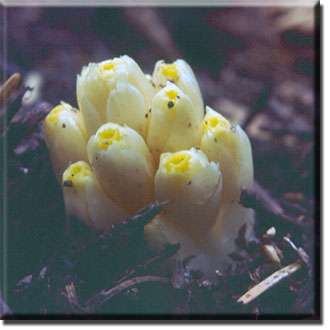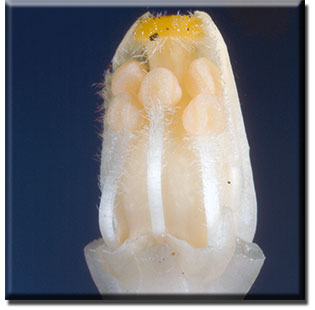Pityopus californica
Pityopus californica may be the least conspicuous of the monotropoids. It grows in the mountains of northern California, but has been reported in a few places in Oregon and Washington. The color of the plant is white. The flowers are in a tight group and each flower points upwards.
A flower of Pityopus californica with the sepals and petals on the facing side of the flower removed. One can see that all of the portions of the flower are white, except for the pinkish to yellowish anthers, which contain yellow pollen, and the bright yellow shiny sticky stigma. The flowers of Pityopus are very hairy inside. In this respect, they are different from the flowers of Pleuricospora. Pityopus, like Pleuricospora, has fleshy fruits. The arrangement of the tissues bearing the seeds are different, however. Cutting a cross-section of the fruit tells you whether you have found Pityopus or Pleuricospora. The seeds are yellowish in this photograph. Seeds of Pityopus pulled loose from the fleshy fruit with the tip of a needle. Probably ground-dwelling mammals eat the fruits of Pityopus and that way distribute the seeds. As can be seen, the seeds of Pityopus are covered by a sticky liquid, and would adhere to the fur of almost any furry animal quite easily. 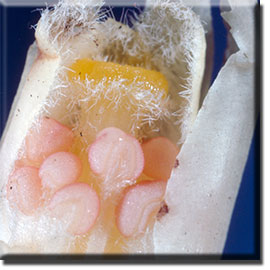 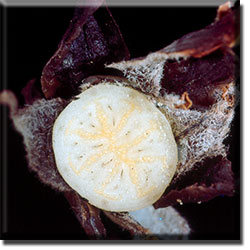 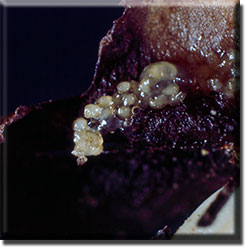 |
